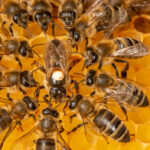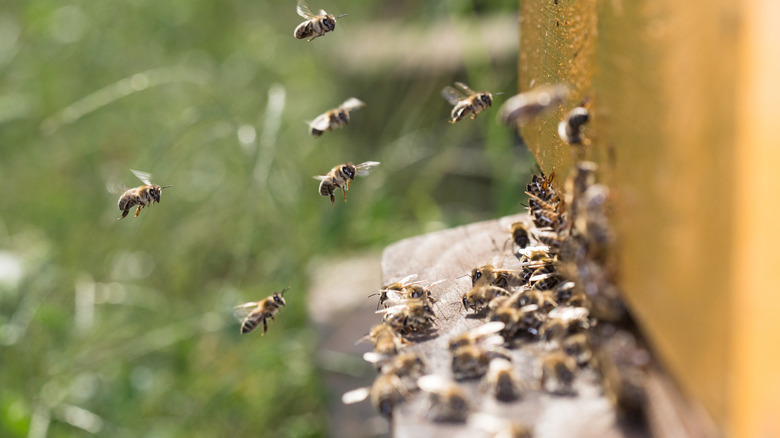
Here’s What It Feels Like To Die By A Swarm Of Bees
Bees are sometimes seen as lovable fluffy friends, meandering through the air on warm days. They don’t want to sting, as EarthSky explains, because honeybees’ stings have two dual barbs that can’t be removed. When trying to retract them from the flesh, they lose part of their abdomen with it.
Per Bee Spotter, honeybees tend to be docile and will rarely sting unless provoked. Even if they do, severe reactions are uncommon. As a result of these factors, bees aren’t seen as a threat to us at all, but they can be terrifying.
Bees are incredibly territorial (their hives literally contain their lives and their species’ future, after all), and their safety-in-numbers policy is something to behold. As per EarthSky, they tend to sting only to defend their hive, and as they don’t mate, it’s also their role to give their lives to defend against intruders. How do they do this? Well, if one sting won’t suffice, several hundred should.
An individual bee sting is a daunting prospect. EarthSky goes on to state that special nerves stimulate the sting after it’s embedded in its target’s skin, causing the barbs to bury it deeper and the venom to continue pumping. However, here’s the kicker, the sting can emit a certain pheromone (apparently with a banana-like scent) that calls the rest of the hive to the unfortunate target, as Outside Online reports.
A fate that's bee-yond terrifying
According to Outside Online, humans can survive an average of 500 to 1,200 bee stings, quite the venomous dose. Bees will reportedly target the head and neck, ensuring that some will inevitably sting the throat. Even if a person survives the pain and horror of the attack, though, there’s even worse to come.
Even if aid is administered, the venom from the many stings can linger, destroying tissues and cells. In this grim scenario, the ultimate cause of death is kidney failure, as the organs are unable to filter away the dead cells.
And that’s just human victims. Smaller targets, like the ever-present bee menace the hornet, can be subjected to a unique phenomenon. Per National Geographic, bees have no chance against giant hornets, as the latter’s exoskeleton is too tough for the stings to penetrate. To prevent hornets from devastating their hives, bees will sometimes form a great, buzzing group around the invader, then frantically quiver in unison to generate enough heat to “cook” the foe. They can generate heat of around 117 degrees Fahrenheit this way, and survive maintaining it for an hour.

Why Sir Alfred Was Stuck In An Airport For 18 Years

Is The Bennu Asteroid Really Going To Hit Earth?

Inside The Time Hells Angels Sued Marvel

The Truth About Cocaine Cowboy Willy Falcon's Involvement With The CIA

What God Really Looks Like In The Bible

This Is What Happens After You Win An Olympic Medal

Thurgood Marshall's Complicated Relationship With The FBI

What Happens When No One Claims A Dead Body?

What It's Really Like Living In Siberia

Everything We Know About The Madonna Biopic So Far























